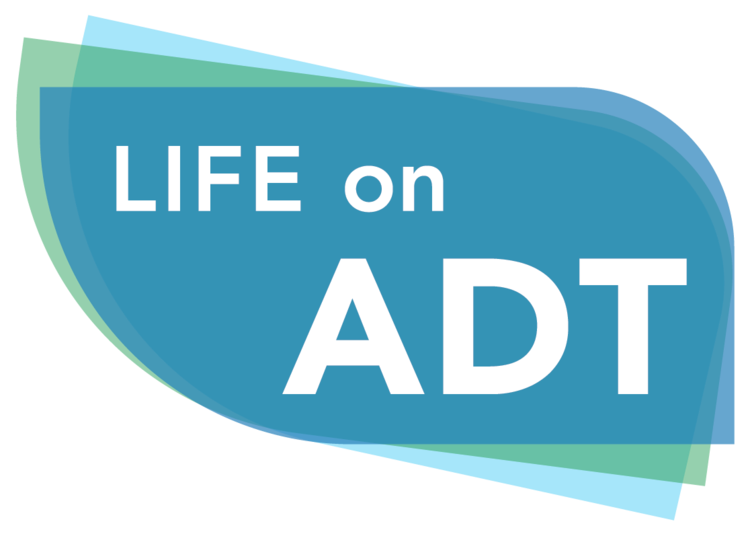Although it is not used this way in North America, there are places where the first generation oral antiandrogen, bicalutamide (Casodex), is used as a monotherapy for ADT. Because this drug blocks the receptors for androgens, the serum testosterone levels for patients on bicalutamide monotherapy remain high.
Excess testosterone is naturally converted to estrogen. As a result, men on this treatment regime are less likely to experience hot flashes, osteoporosis, and a total loss of their sex drive, which are all due to loss of estrogen in men on LHRH drugs. However, estrogens cause breast development and discomfort in the breast is a common side effect of bicalutimide as monotherapy.
Because of some toxicity and limited survival benefit, bicalutimide monotherapy is now not a common ADT protocol in Europe, although it is still approved there to treat prostate cancer. The patients best served by this ADT protocol are those who find the side effects of the LHRH drugs particularly difficult to tolerate yet need androgen blockade to control their prostate cancer.
Against this background, we have a new paper, which seems to us as anachronistic. The paper addresses a way to avoid breast discomfort for patients on bicalutimide monotherapy. This is to provide the patients with prophylactic radiation to the breasts. To be clear, this protocol has been around for decades, but is used less commonly in recent years. Now, bicalutimide is typically used short term in order to prevent testosterone flares when patients start on LHRH agonist drugs. The breast problems are reduced by using the bicalutimide short term. This avoids a need for any prophylactic radiation, and avoids the risk of cardio-toxicity from the radiation and the risk of a secondary, radiation-induced cancers.
The authors describe gynecomastia for prostate cancer patients as “a frequent disabling side effect of antiandrogen therapy….[and along with breast pain]… can significantly affect a patient's quality of life.” They do not provide a reference for this, but other research that they do not cite suggests that the distressed from these breast symptoms are highly variable among men who are on ADT treatments that promote breast development. Admittedly, some men find the breast symptoms very distressing while but others find them of little bother.
What is most odd about this paper is why the patients were on any drugs at all. Out of the sample of 76 men (with the mean age of 74 years), who were then followed for one to five years, 2/3 of the men had a Gleason scores of six or lower. Similarly, over 2/3 of the men had a PSA value of less than 10.
As noted in the title of paper, these men had a low to intermediate risk of prostate cancer mortality. Increasingly these men would be advised to go on active surveillance without any prostate cancer treatments. As such, they would not need any additional treatments to mitigate the side effect of the drugs.
So, why are these patients being put on bicalutamide monotherapy? According to the authors, some of the men were too frail and had too many comorbidities to be good candidates for surgery. Others were reluctant to give consent for external beam radiation or found this treatment took too long. Others evidently feared radiation-related morbidities. On that last point, it would seem better that the men simply delayed active treatment rather than go on bicalutimide monotherapy.
By both current North American and European guidelines, the majority of men in this study did not warrant starting on ADT of any form.
Reference:
Chernomordikov, E., Rouvinov, K., Mermershtain, W., & Lavrenkov, K. (2023). Prophylactic Breast Irradiation for Prevention of Bicalutamide-induced Painful Gynecomastia in Patients with Low- and Intermediate-risk Prostate Cancer. The Israel Medical Association journal: IMAJ, 25(3), 205–209.
